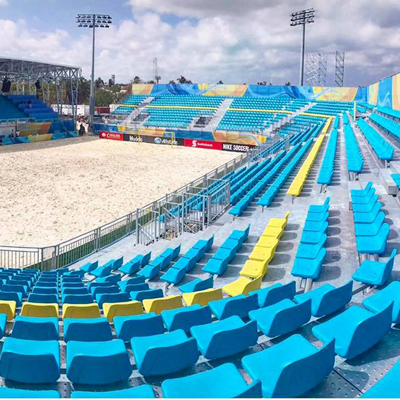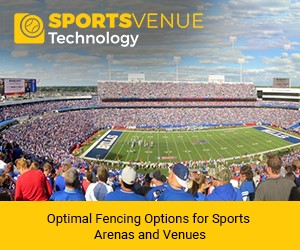Venue Lighting and Sustainability: Exploring LED Solutions and Energy Efficiency

When it comes to setting the stage for any event, be it a concert, a wedding, or a corporate gathering, lighting plays a crucial role in creating the right ambiance. However, as the world embraces sustainability and energy efficiency, the focus on using eco-friendly lighting solutions has become paramount. This has led to the widespread adoption of LED (Light Emitting Diode) lighting systems in various venues. In this article, we'll delve into the significance of venue lighting, the impact of LED solutions on energy efficiency, and the overall benefits for both the environment and event organizers.
The Role of Venue Lighting
Venue lighting serves as the backbone for creating a captivating atmosphere, setting the tone, and accentuating the overall experience for the audience. Whether it's a subtle, intimate setting or a dynamic, vibrant environment, the right lighting can transform the mood and enhance the visual appeal of the space. In the past, traditional lighting solutions, such as incandescent and fluorescent bulbs, were commonly used, but their energy consumption and environmental impact were considerable.
Understanding LED Solutions
LED solutions have revolutionized the way venues approach lighting design, serving as a groundbreaking alternative to traditional methods. Operating as semiconductor devices that transform electricity into light, LEDs offer a range of advantages over standard lighting sources, including improved energy efficiency, a longer lifespan, and reduced maintenance costs. Furthermore, LEDs emit light in a specific direction, minimizing energy wastage in contrast to conventional bulbs that disperse light in all directions. This targeted emission not only reduces energy consumption but also enables precise lighting control, ultimately enhancing the overall visual experience for event attendees.
| Also Read: Optimizing Venue Operations: Harnessing Software Solutions for Enhanced Efficiency |
Energy Efficiency Benefits
LED lighting's exceptional energy efficiency stands as one of its most compelling attributes. In comparison to traditional lighting sources, LEDs consume notably less energy, leading to decreased electricity bills and a reduced carbon footprint. Research indicates that LEDs can utilize up to 75% less energy than incandescent bulbs and boast a lifespan of up to 25 times longer. This prolonged durability not only lessens the need for frequent replacements but also decreases the overall waste generated from disposing of used bulbs. Consequently, LED solutions play a significant role in facilitating considerable energy savings and encouraging a more sustainable approach to venue lighting.
| Also Read: Advancing Sports: Stadium Lighting's Impact on Players and Fans |
Environmental Impact
The environmental implications of LED lighting are significantly less harmful when compared to conventional lighting technologies. Unlike fluorescent lights that often contain hazardous materials like mercury, LED bulbs are devoid of such substances, rendering them safer for both the environment and human health. Furthermore, the decreased energy usage of LEDs directly results in lower greenhouse gas emissions, helping to alleviate the negative impacts of climate change. Opting for LED solutions in venue lighting allows event organizers to actively engage in the worldwide endeavor to diminish energy consumption and address environmental degradation.
Cost-Effectiveness and Long-Term Savings
Cost-effectiveness and long-term savings are notable advantages of LED lighting. Although the initial investment in LED lighting may appear higher than that of traditional lighting solutions, the long-term benefits far surpass the initial costs. With a longer lifespan, LED bulbs necessitate fewer replacements and maintenance, thus reducing operational expenses over time. Additionally, the considerable energy savings translate into lower electricity bills, resulting in significant financial savings in the long run. By allocating resources more efficiently, event organizers can direct funds to other essential aspects of event planning and management, ultimately enhancing the overall event experience for attendees.
| Also Read: How Does Stadium Lighting Revolutionize the Sports Industry? |
Integration of Smart Lighting Systems
The integration of smart lighting systems further amplifies the benefits of LED solutions in venue lighting. Smart lighting technology allows for remote monitoring and control of lighting fixtures, enabling event organizers to adjust the intensity, color, and timing of the lights effortlessly. By incorporating sensors and automation, venues can optimize energy usage based on occupancy patterns and natural light availability, thereby maximizing energy efficiency without compromising the visual appeal of the event. This level of flexibility and adaptability not only enhances the overall ambiance but also contributes to a more sustainable and eco-friendly approach to venue lighting management.
Future Prospects and Innovations
As technology continues to advance, the future of LED lighting appears promising, with ongoing innovations aimed at enhancing energy efficiency and optimizing performance. Researchers and lighting manufacturers are continually striving to improve the efficacy and color rendering capabilities of LEDs, ensuring that they can meet the diverse and evolving needs of various events and venues. Additionally, advancements in smart lighting technology are facilitating the integration of LED systems with other smart building solutions, enabling seamless coordination and management of energy consumption within the broader context of venue operations.
Impact on Event Experiences
The adoption of LED lighting not only contributes to sustainable practices but also elevates the overall event experience for attendees. With the ability to adjust and customize lighting effects, event organizers can create immersive environments that resonate with the theme and purpose of the event. Whether it's a concert, a theatrical performance, or a corporate gathering, the dynamic and adaptable nature of LED lighting allows for the seamless transformation of the venue, enhancing the emotional connection and engagement of the audience. The interplay of light and color can evoke specific moods, reinforce branding, and create lasting impressions, thereby enriching the overall impact of the event.
Educational Initiatives and Awareness
To further promote the adoption of sustainable lighting practices, educational initiatives, and awareness campaigns play a vital role in informing event organizers, venue managers, and the general public about the benefits of LED solutions and energy-efficient lighting. By fostering a comprehensive understanding of the environmental impact of lighting technologies, as well as the potential for reducing energy consumption through LED adoption, these initiatives can encourage widespread implementation of sustainable lighting practices across various event venues. Increasing awareness fosters a collective commitment to sustainability, driving the industry towards more eco-friendly and responsible lighting solutions.
Conclusion
In summary, the integration of LED solutions in venue lighting represents a significant step toward achieving sustainability and energy efficiency in the events industry. As technology continues to evolve and awareness of environmental responsibility grows, LED lighting remains a pivotal element in shaping the future of venue design and event management. By embracing innovative LED technologies, adopting smart lighting systems, and promoting sustainable practices, event organizers can create impactful and immersive experiences while reducing their ecological footprint. With a concerted effort to prioritize sustainability, the future of venue lighting appears bright, both figuratively and literally, as it continues to illuminate memorable moments and inspire audiences around the world.





